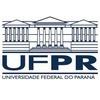I. INTRODUCTION
Mycotoxins are secondary metabolites produced by fungi (fusarium, aspergillus, penicillium mainly) that can cause serious health problems in poultry and may result in severe economic losses. They can exert negative impact on both performance (Kolawole et al, 2020) and intestinal health (Antonissen et al, 2014) depending on the type of mycotoxin, extent of exposure, its concentration, the age of the animals and their health status. Mycotoxins can also be a predisposing factor for other issues and increase susceptibility to infectious diseases like salmonellosis. Co-infection models have not been well studied over the past decades and only Ziprin and Elissalde (1990) explored the effect on broilers of T2-toxin with S. Typhimurium. Out of all mitigation strategies used to control salmonella prevalence in poultry, probiotics are seen as a promising technology with complementary modes of action (Keerquin et al, 2021). They can also be considered as potential solutions to control some inflammatory responses induced by mycotoxins (Rhayat et al, 2019). Therefore, the current study evaluated immune parameter modulation by a commercial probiotic solution, Bacillus subtilis DSM 29784 (Bs29784) in a mycotoxin-Salmonellosis experimental model (Liew and Mohd-Redzwan, 2018).
II. METHODS
322 one-day-old Ross broilers were acquired from a commercial hatchery. The animals were placed in isolators (experimental unit) and randomly assigned to 7 different groups of 46 broilers each. The treatments consisted of a control group (ctrl), a mycotoxin (CM) and salmonella group (CS), a control group supplemented with the probiotic Bs29784 (1x108 CFU/kg feed; PRO), a co-infection mycotoxin-Salmonella group (CMS), a Salmonella group with Bs29784 (CS-PRO) and a mycotoxin-Salmonella group receiving Bs29784 (CMS-PRO). From 1 day-old until the end of the study at d28, the animals in CM, CMS and CMS-PRO groups received the mycotoxins in their diet (mainly fumonisins (12744 ppb), deoxynivalenol (1452 ppb) and T-2 toxin (358 ppb)). On the fourth experimental day, each animal of CS, CMS, CS-PRO and CMS-PRO groups received 1x108 CFU Salmonella Heidelberg by oral gavage. All birds (feed and drinking water also) were initially confirmed to be Salmonella Heidelberg negative prior to the commencement of the study. Then, at d4, d7, d14, d21, d28, 8 birds per treatment were sacrificed and blood, liver and intestinal tissues, cecal content, and feces were collected. Intestinal permeability was evaluated by serum FITC-dextran, caeca content was collected to assess Salmonella spp. counts by Most Probable Number (MPN) and microbiota composition was determined using S16 sequencing. In caecal tonsil, the cytokine gene expression was measured, histomorphology was assessed from jejunum and caecum tissues and liver samples were also collected for lipoperoxidation (LPO) analysis and histopathology evaluation. Finally, anti-salmonella IgA was quantified in feces. Statistical analysis was performed by two-way ANOVA with Tukey’s post-hoc test (P < 0.05).
III. RESULTS AND DISCUSSION
Mycotoxin presence in the feed significantly increased intestinal permeability (P=0.0157) compared to the control group and the Bacillus subtilis probiotic decreased the FITC-d concentration in blood by 13 and 11% (P< 0.05) in the salmonella and salmonella/mycotoxin challenges, respectively. The mycotoxins are considered as “gate openers” which can increase the translocation of some toxins or pathogens through the intestinal barrier.
LPO as a biomarker of cell damage caused by free radicals’ exposure, is sensitive to the presence of the Bacillus subtilis probiotic. The probiotic decreased the LPO concentration in liver tissue by 52% (P< 0.05). It has been recently demonstrated (Kruse et al., 2021) that the Bacillus subtilis probiotic can produce high concentrations of antioxidants under challenge conditions which could explain part of its effect in controlling the lipoperoxidation process.
Both fusarium mycotoxins and Salmonella affect the innate immune system resulting in increased expression of several cytokines and activation of macrophage as shown by the increase of IL-6 pro-inflammatory cytokine relative to the control (+7% and +4% (P< 0.05) with mycotoxins and salmonella, respectively). The presence of the Bacillus subtilis probiotic in the diet can limit the production of IL-6 by 11% (P< 0.05) and then maintain the initial state before the challenge. Choi et al (2021) demonstrated that the Bacillus subtilis probiotic can facilitate the production of metabolites like hypoxanthine which is involved in cellular pathways leading to control the secretion of pro-inflammatory compound like IL-6.
Finally, the prevalence of Salmonella was also investigated by counting its numbers in the caecal content. The probiotic solution significantly decreased by 35% and 10% the Salmonella spp count in the intestine under the Salmonella and Salmonella-mycotoxin challenges, respectively.
IV. CONCLUSION
Fusarium mycotoxins have negative impacts on gut health and can increase susceptibility of broilers to Salmonella infection. Bs29784 has shown beneficial effect on gut permeability, salmonella shedding, redox status and on the control of inflammation, and can support the health of the animals in a preventive strategy against mycotoxin and Salmonella challenges.
Presented at the 34th Annual Australian Poultry Science Symposium 2023. For information on the next edition, click here.
















